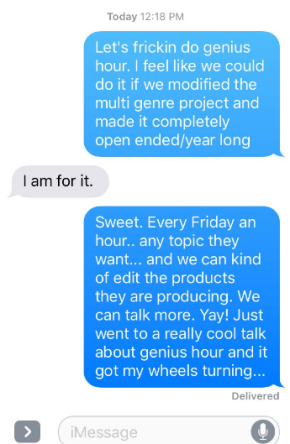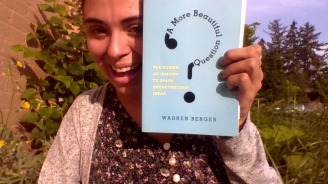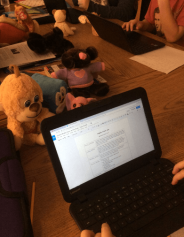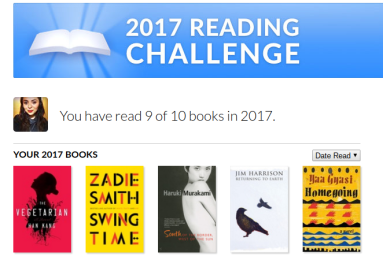Summer is upon us!
All summer I have been tending to my outdoor garden: petunias, gerbera daisies, coral bells, turf lilies, kale, lettuce, and more! Those plants have been growing relatively well all summer. Despite my love for plants, I have never fared well with indoor plants… Just ask my principal about my classroom grow labs! Regardless, I am loving my terrarium plants, quite a bit, already!
Before updating you on the progress of my terrariums, I would like to show you an easy way to showcase your budding green thumb–Try making a mason jar terrarium!
How to Make a Mason Jar Terrarium
In the video below I will show you how to make a simple mason jar terrarium.
What you need: A mason jar, indoor potting soil, activated carbon, river pebbles, and a small plant of your choice that is suitable for living indoors. I would suggest a succulent or cactus for the easiest care possible!
Update on My Terrarium Project
So for my personal project this summer, I am building a terrarium. I outlined my project plan in a previous post. Since then, I have made a lot of progress with my little terrarium project!
I started out going to the store and buying the pebbles, activated charcoal, potting soil, and a variety of plants. For plants, I bought some rainbow cacti, an aloe vera plant, various succulents, an orchid, and even a little bonsai tree.




This brings me to my first issue. Long story short, I needed to do better research about which specific plants to buy. I accidentally purchased many plants which I found to be incompatible with the open terrarium environment, all of which (but one) I had to return to the store.
One word of advice: Do your research, and be patient with planning!
Looking back, I was a little over-eager with my project, so I bought a lot of plants because I was planning on building my first terrarium in an unused fish tank I had lying around my house. I wound up regretting these quick purchases, as I didn’t give myself much time to shop around and see which plants I had access to locally, or which plants would even grow well in the environment I created.
When I first put together the fish tank terrarium, it included an orchid and an aloe vera plant. However, as I continued doing my research, I realized having an orchid in the terrarium may be problematic as orchids should not have their soil changed, which was a mistake I initially made. I also ran into a problem with the aloe vera plant in that it kept falling over or leaning onto other, smaller plants in the terrarium.

My terrarium after removing the orchid.

My terrarium after removing the aloe and the orchid. I also adjusted the levels of some plants and rearranged them.
To solve these two problems, I removed both plants from the terrarium and replaced them/rearranged the other plants in the terrarium.
Looking back, I could have avoided the mess of planting, removing, and repotting these plants had a been a bit more patient with the research and planning phase of my project. I was so excited to get started, I didn’t give myself enough time to thoroughly research the plants available near me or if they would do well living together in the environment I created. Note taken: Spend more time doing thorough research before going plant shopping! Next time, it may be smart to make a list of plants available at the store, go home and do more research, then return to the store to make some purchases. You live, you learn!
Making Mini-Terrariums!
I also went a bit further and began exploring smaller and hanging terrariums. Although hanging terrariums are really cute, they are a bit more difficult to construct than larger ones. The main issue with small, hanging terrariums is that it is difficult to firmly plant anything inside, as it is difficult to stick your hands/fingers in to press things down.
The best resource for me throughout this entire process has been https://www.thespruce.com which has provided me with information on which plants to use, how to build different types of terrariums, and how to design different types of terrariums. This website was useful in that it also helped me discover which plants I should buy or keep, and which plants would do well together. It also had blog posts about common mistakes people make with terrariums, and how to avoid them–Definitely worth the read! I would definitely recommend this site to anybody else looking for some help with their green-thumb!
The Spruce has a ton of posts regarding terrariums, and different types. Something I found particularly interesting is a post about creating mason jar terrariums, similar to the ones I mentioned at the beginning of this post. However, the mason jar terrariums they describe, are closed terrariums with a more delicate environment. This makes me wonder, maybe I should start with a tiny mason jar enclosed terrarium, rather than another huge terrarium project? Again, I have more research to do!
Although The Spruce was my major source of information, I also received a lot of inspiration simply through looking at completed terrariums. Buzzfeed curated a pretty great list of awesome, simple, do-it-yourself terrariums from across the web. Simply looking at what others had done gave me some ideas for what I wanted to do with my own terrarium project.
In considering how my process of trial and error has played out with my terrariums, it harkens back to learning about the design cycle, and how often a product/project may require many iterations before completion (A. Bulte, K. Klaassen, A. Pilot, & H. B. Westbroek (2010). No doubt, I have gone through multiple iterations of my terrarium as I observed and learned what was working and what wasn’t.
Overall, I am really happy with my large terrarium and small, hanging ones so far. All are doing well, minus one that my cat got to…
Looking Forward
Looking forward I would like to find a container in which I can build an enclosed terrarium. I would like to do this because I have a tropical plant I bought which requires a different environment than the plants in my current terrarium.
A closed terrarium is good for plants that require more moisture or humidity. The plants in my open terrarium require very little water, about a tablespoon once a week. If I were to plant ferns or any other humidity loving plants into a closed terrarium, they will require more water. I would like to include moss as well. This will allow for a slightly more verdant, colorful environment. I think this would also be much smaller.
What will I need to create an enclosed terrarium?
- A medium sized enclosed glass container
- Sheet moss
- Humidity loving plants, like ferns
- Soil (Have it!)
- River pebbles (Have it!)
- Activated charcoal (Have it!)
References
A. Bulte, K. Klaassen, A. Pilot, & H. B. Westbroek (2010). Providing Students with a Sense of Purpose by Adapting a Professional Practice. International Journal of Science Education, Vol. 32 (5), 603-624, retrieved from http://dx.doi.org/10.1080/09500690902721699.
All images and media belong to Guadalupe Bryan unless otherwise stated.




















